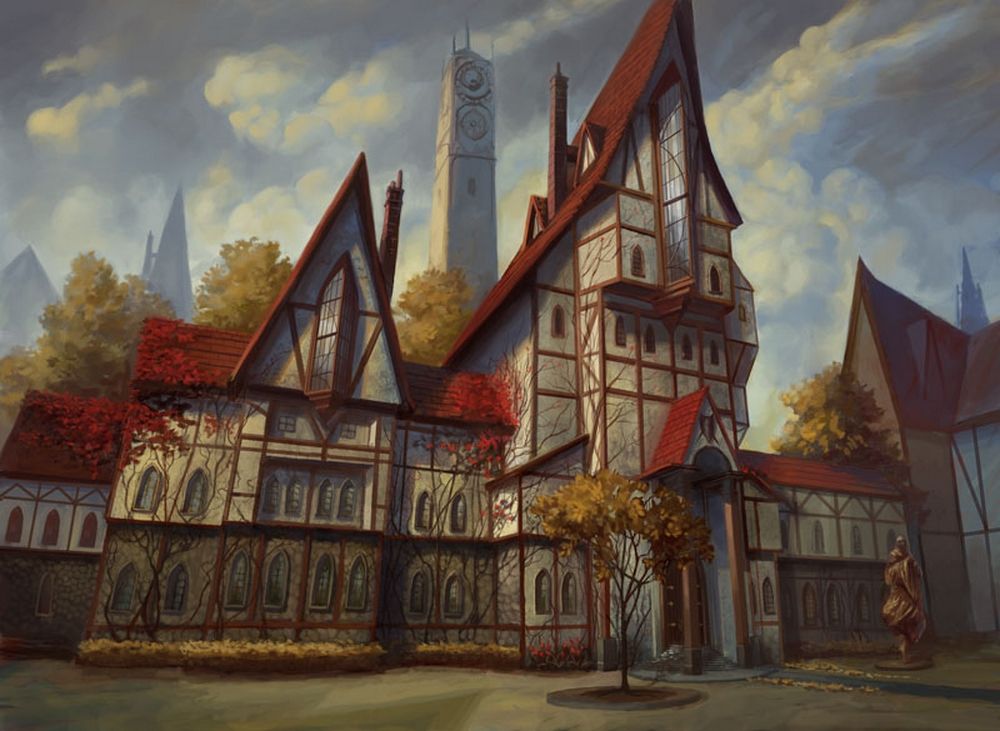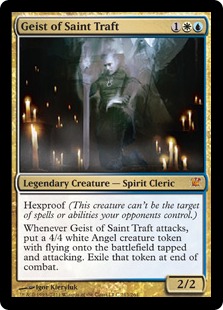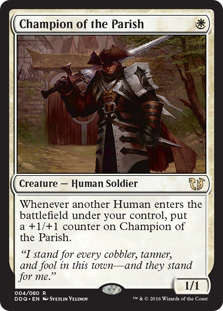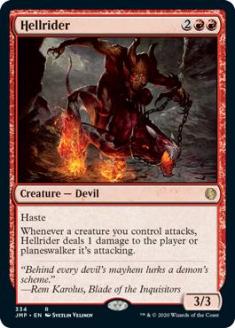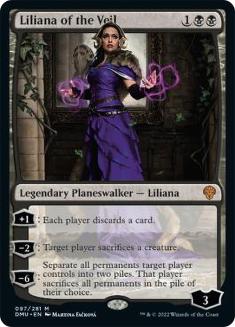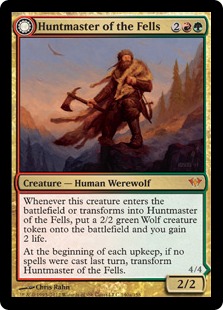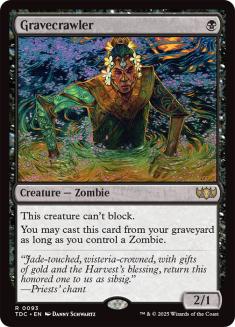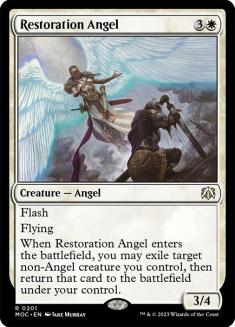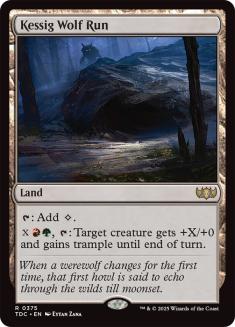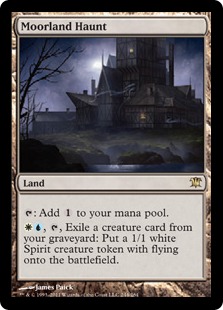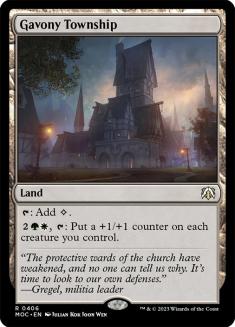There are a lot of exciting things going on in competitive Magic right now. Modern isstaying dynamic well after the release of Modern Horizons 2. Historic received a bunch of interesting new cards. But right now my mind looks to the future. After two years of ruling Standard, Throne of Eldraine is finally facing rotation. With its exit comes the return of Innistrad.
It’s hard to believe that Innistrad is nearly ten years old. It’s one of the most iconic sets in Magic’s history, ushering in an era of top-down design that foreshadowed the Multiverse and its many characters transcending the game itself. And for us competitive players, it brought an all-time great Limited format as well as many iconic cards like Delver of Secrets, Snapcaster Mage, and Liliana of the Veil.
Unfortunately, our first return to the horror-themed plane was entirely underwhelming. Shadows over Innistrad and Eldritch Moon felt more focused on the Eldrazi than the iconic elements of Innistrad, falling flat on the latter. But my expectations are high for the upcoming Innistrad: Midnight Hunt and Innistrad: Crimson Vow, as not only is it entering at a time of renewed optimism regarding Standard, I expect it will come with a much heavier focus on the Werewolves, Vampires, and other horror tropes that make the flavor of Innistrad so evocative.
I’m also optimistic because this is our chance to get some iconic Innistrad Block cards into Standard, Pioneer, and Historic. The cutoff point for Pioneer made sense given how powerful Innistrad Block was; still, it’s unfortunate that so many beloved and interesting cards were left out. Many of these cards were Modern staples, but with Modern ratcheting up in power level, they’ve been left behind. So we have a situation where plenty of fun cards are collecting dust, and it’s time to rectify that.
Here are the eight Innistrad Block cards I want to see reprinted in one of the upcoming Innistrad sets:
8. Geist of Saint Traft
This is likely the most controversial card on the list, because hexproof tends to elicit strong reactions from people. I’m no fan of Selesnya Hexproof and the gameplay it engenders. Yet hexproof does serve a valuable purpose for competitive play in emphasizing playing to the battlefield.
For any hexproof creature, the best way to answer it is in combat, since so few spells can interact. Perhaps no card exemplifies this dynamic more than Geist of Saint Traft. Paired with cheap disruption to clear away blockers, or as a sideboard card against control decks, it shines. But when opponents are filling the battlefield with blockers, a three-mana 2/2 isn’t doing a whole lot. The best you can hope to get is a trade for another creature and four damage for your troubles — not a great exchange.
Ten years ago we saw Geist of Saint Traft at its best since it got to play alongside Gut Shot, Vapor Snag, and Snapcaster Mage. But in most Standard environments, I think it would serve as a check on a metagame that gets too spell-dominant, and having those checks is important for maintaining a dynamic Standard metagame over several months or longer.
In Historic and Pioneer, I’d be interested if an Azorius Auras shell could compete with the power of Orzhov, and whether or not giving up Lurrus of the Dream-Den as a companion would be worth the power of Geist. These are questions that create a more diverse metagame with different variants of an archetype having relatively equal power.
7. Champion of the Parish
With Champion of the Perished already revealed, I doubt we see the original come back, but I think it would have a majorly positive impact in Historic and Pioneer. In both formats, white aggressive decks have mostly struggled. Toolcraft Exemplar has been tried many times and failed to recreate the success it enjoyed during its time in Standard, and the white aggro decks I’ve seen have mostly been all-in on small creatures without much interaction or hope to beat a sweeper.
We’ve also seen disruptive aggro decks in these formats like Bant Spirits or Selesnya Company, but the power level hasn’t been there for these decks to be consistent contenders. When Humans emerged in Modern, it revealed the power of having an aggressive deck with a low curve and plenty of disruption. But those disruptive creatures tend to be smaller in size for their mana cost, which hurts your clock.
The tribal synergies from Humans mitigated the downside here, and no other tribe has a duo as powerful as Thalia’s Lieutenant and Champion of the Parish. One comes down right before you start disrupting your opponent, while the other comes down afterward as the killing blow — a perfect combo.
I want to see Champion of the Parish unleashed in Pioneer and Historic to allow a wider range of aggressive decks to exist. I don’t think the card would prove overpowered in Standard, even with great support from cards like Luminarch Aspirant and Elite Spellbinder.
6. Hellrider
A staple of aggressive decks ten years ago, Hellrider has languished in obscurity since it rotated, even after its addition to Historic. So I’m not sure if it’s at an appropriate power level for Pioneer, but I think it would be a great addition for Standard.
Mono-Red Aggro is losing many of its best cards in rotation, and as much as many players are surely happy about that, that deck is an important check on the format since it’s so good at getting underneath its opponents.
The only question is whether the red deck of choice will be more creature-focused or burn-focused. Personally, I’d say the gameplay is more interesting and dynamic when the deck is more creature-focused, though results from Pioneer and Historic would certainly suggest the burn-focused lists are more powerful. Hellrider is a great payoff for creature-centric red decks, and would help the Mountain players of the world transition into the new world of Standard without Embercleave and friends.
5. Liliana of the Veil
The most iconic printing of one of Magic’s most iconic characters, Liliana of the Veil has fallen on hard times in recent years. Once a staple of Jund Midrange in Modern and other decks, it no longer packs the same punch and has largely been deemed unworthy of play in a world where it’s so easy to run Lurrus of the Dream-Den as a companion.
Really, the format has sped up a little too much for Liliana to make a big impact in Modern, which is why I’m interested in what this card can do in Historic and Pioneer. Neither format has a Jund-esque deck because it’s too easy to go over the top of them. Liliana is great at restricting the resources in a game, thereby making it difficult to cast expensive cards or assemble powerful synergies.
If you’re worried about what such a powerful planeswalker would do in Standard, I’d remind you that Liliana was perfectly fine during its initial run. There aren’t the same pieces to build around Liliana in that classic Jund-style in such a small format, so Liliana ends up being one midrange threat among many, and it’s hardly overpowered in that role. You can break the synergy of her +1 by building with some graveyard synergies, but that’s the kind of deckbuilding we should be encouraging, especially in a plane that’s historically good for graveyard decks.
4. Huntmaster of the Fells
Like Liliana, Huntmaster of the Fells is a powerful card that’s no longer on a level to see play in Modern, so I’m interested in what it can do in Pioneer and Historic. It’s great at playing defense against aggressive decks or applying pressure against control, making it an ideal midrange threat. And if you do some work adding plenty of instants to your deck, you can generate quite a bit of card advantage with it.
But what really makes me want to see Huntmaster return is the interesting, intricate gameplay it creates. Yes, there are times when you simply don’t have a spell to cast and Huntmaster quickly buries you, but more often Huntmaster creates a situation where you want to pace your spells differently, finding the right balance between developing your position and holding enough back that your opponent can’t freely transform it.
We saw a similar dynamic recently with Nightpack Ambusher, but that trigger was entirely up to its controller, making it much more difficult to stop without simply removing the Ambusher from the battlefield. Huntmaster turns it into a two-player sub-game, which is much more satisfying for both parties.
I love the dynamic of Huntmaster of the Fells providing a predictable and relatively high floor with a ceiling that can potentially take over a game but is difficult to realize. It creates games where both players have agency and where the games it takes over feel earned. We’re past due to see it return to competitive play.
3. Gravecrawler
It’s no secret that I love sacrifice decks, so I may be a little biased with this one, but it would certainly make a great complement to Champion of the Perished in Standard and an even better complement to Stitcher’s Supplier in Historic and Pioneer.
Moreover, right now the sacrifice decks that exist are trying to go over the top of its opponents with cards like Bolas’s Citadel and Korvold, Fae-Cursed King. But there’s room for a lower-curve, aggressive approach in the vein of The Aristocrats from many years ago. These sacrifice decks use cheap threats to apply early pressure to force their opponents to interact with less valuable threats, thus clearing a path to assemble their sacrifice synergies unabated.
Gravecrawler is perfect in these kinds of decks, since it has a rate that stands on its own as an aggro creature. The more aggressive sacrifice decks have a much better matchup against combo decks than the midrange lists, though they struggle more against decks that clog the battlefield while answering Mayhem Devil. So while they look similar on paper, they occupy a different space in the metagame that can make the presence of sacrifice decks more interesting than how much hate exists in the metagame at that moment in time.
In Standard, Gravecrawler can function as an aggro creature with some resilience to removal first and sacrifice fodder second since there won’t be the same pieces for sacrifice decks, but with Champion of the Perished already revealed, a Zombie tribal deck is going to need more support to be a player at the highest levels.
2. Restoration Angel
The gem from Avacyn Restored, a set most of us would like to forget, Restoration Angel is among the more versatile creatures ever printed. It’s seen success in aggro-control, midrange, combo, and control at the very least, and that’s because, while straightforward, its abilities offer so many lines of play.
Restoration Angel can gain value with enters-the-battlefield abilities; it can go infinite with Kiki-Jiki, Mirror Breaker; it can protect an attacking creature after a surprise combat trick; or it can simply protect a key creature from spot removal. With flash it’s great for decks that want to establish a clock without letting down their defenses or for more aggressive decks to hold back in the face of a sweeper.
Like Huntmaster of the Fells, Restoration Angel has a huge impact on how each player plays the game, thus making the games all the more intricate and interesting without overcomplicating them. It’s a shame the card has fallen out of Modern, but it can certainly be a player in Standard again, as well as in Historic and Pioneer, and I’d like to see it get the chance.
1. Innistrad Utility Lands
There was a full cycle of these lands printed across Innistrad Block, but I’d be most excited for these three to return. All three saw substantial play in Standard across many archetypes, and Gavony Township was once a staple in Modern within various Birthing Pod archetypes.
Utility lands are among the most powerful card types in all of Magic because of their ability to mitigate flood and provide value from a spot in your list that usually loses value as the game goes long. The Castles are leaving Standard this fall, and that leaves the format light on options for players to get value from their manabase. I like these since they’re powerful, but come at the cost of adding a colorless land to your deck, making it less consistent. It’s rare that you’ll find a deck that wants to play four copies of any of these cards, but the first one or two have immense value.
And beyond Standard, these are certainly good enough for Pioneer and Historic. Gruul would likely welcome a single copy of Kessig Wolf Run to bolster its late-game, while any Spirits deck would salivate at Moorland Haunt provided it can make the mana work. Meanwhile, Gavony Township fits into all manner of Collected Company decks. There are plenty of options for these to see play and make a positive contribution to many metagames.
The bottom line here is that with Modern getting such a huge boost in power level in the last few years, there are many cards that have been left behind and deserve a new life. So much of what makes the larger formats appealing to entrenched players is the nostalgia of playing with cards they’ve enjoyed for years in new and interesting ways, and that’s exactly what reprinting these cards would allow.
We’ll see how generous Wizards of the Coast (WotC) is feeling over the coming months.

